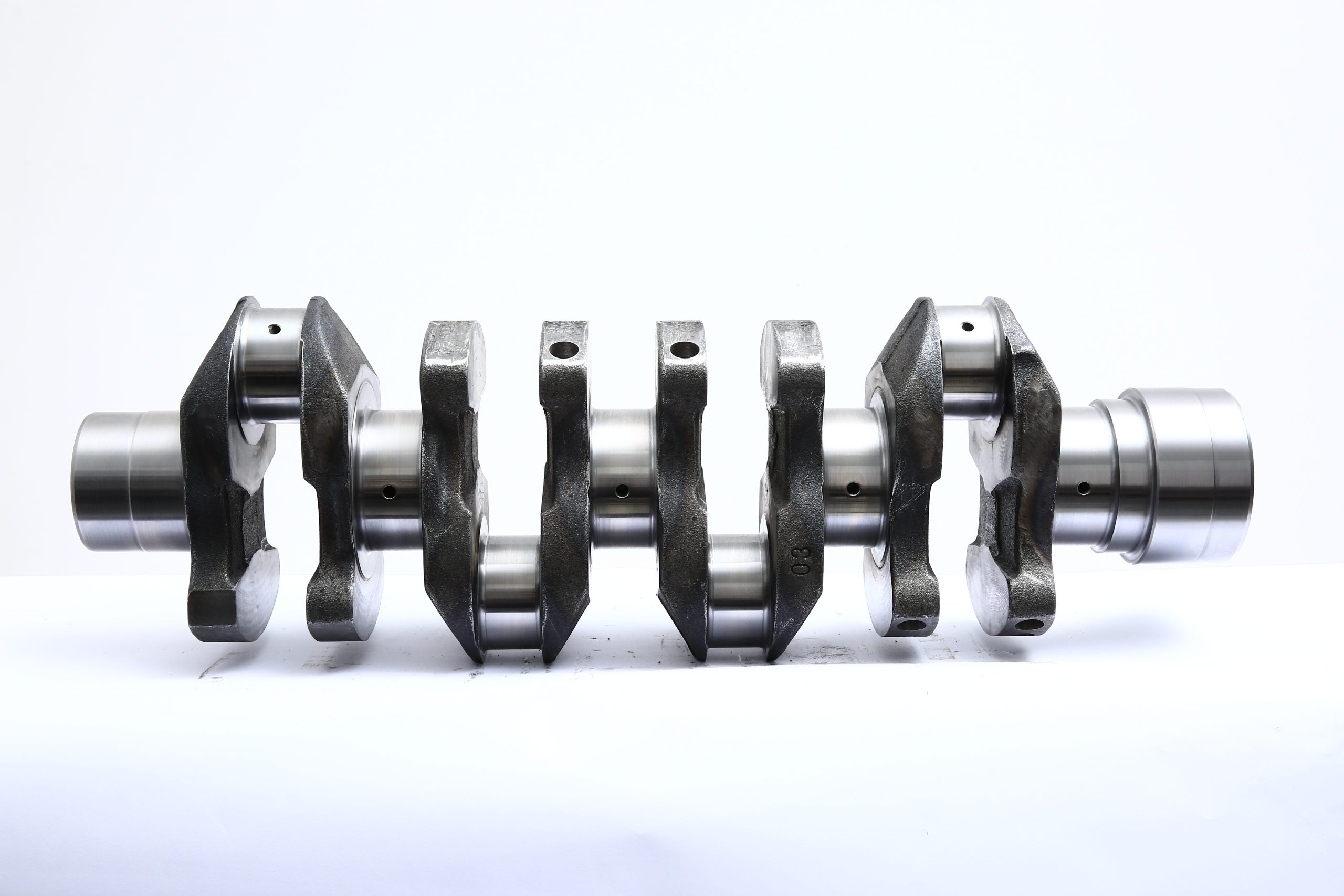The crankshaft is a crucial component of an internal combustion engine, converting linear motion into rotational motion. Its design and construction directly impact an engine’s performance and efficiency. But, do you know there are different types of crankshafts? Let’s delve into the world of crankshafts and understand these variations.
The Role of Crankshafts
A crankshaft takes the upward and downward motion of the pistons, which is linear, and transforms it into the rotational motion necessary to move the wheels of a vehicle. This conversion process makes the crankshaft an indispensable part of any engine. The crankshaft, with its crankpins, main journals, and counterweights, has a complex design to fulfill this key responsibility.
Different Crankshaft Types
There are three primary types of crankshafts: flat-plane, cross-plane, and rotary. Each has unique features and advantages that we will now explore.
Flat-Plane Crankshaft
The flat-plane crankshaft, also known as the 180-degree crankshaft, is commonly found in high-performance vehicles, particularly in racing cars and some types of sports cars. This type of crankshaft is named so because its connecting rods are attached to the crankshaft at 180-degree intervals, creating a flat or straight plane.
One major advantage of the flat-plane crankshaft is its lighter weight, which allows the engine to rev higher and quicker. This quick revving nature contributes to a high power output, crucial in performance vehicles. However, flat-plane crankshafts can produce more vibrations, which might result in more wear and tear on the engine components over time.
Cross-Plane Crankshaft
The cross-plane crankshaft, or 90-degree crankshaft, is more common in V8 engines. The name is derived from the 90-degree angle between the crankpins, forming a cross shape when viewed from the end.
Cross-plane crankshafts are heavier than their flat-plane counterparts due to their additional counterweights. While this means lower revving speeds, it results in smoother operations and less vibration. This characteristic makes them the preferred choice for luxury vehicles where comfort is paramount.
Rotary Crankshaft
Rotary crankshafts are a bit different. They are found in rotary or Wankel engines, where the crankshaft remains stationary, and the housing rotates around it. Although these crankshafts offer high power-to-weight ratios and smooth operations, their application is limited due to issues with fuel efficiency and emissions.
Choosing the Right Crankshaft
The type of crankshaft best suited for a particular engine largely depends on the application. Flat-plane crankshafts are often preferred for their high-speed performance, whereas cross-plane crankshafts are favored for their smooth, vibration-free operation. Rotary crankshafts, although less common, have their niche in specific applications.
In essence, the type of crankshaft that will serve you best is dependent on your specific needs. Do you prioritize performance or comfort? Are you building a race car or a luxury vehicle? The answers to these questions will guide your choice.
In conclusion, understanding the different types of crankshafts, their advantages, and their limitations can help in making informed decisions when it comes to engine design and performance. The crankshaft might not be the most visible part of a vehicle, but its role in engine performance and efficiency is undeniable.
The crankshaft is an essential component of an internal combustion engine, translating linear motion into rotational motion. Its design and construction directly affect the engine’s performance and efficiency. This article will guide you through the different types of crankshafts, their roles, and their specific applications.
Contents
- The Function of Crankshafts
- Flat-Plane Crankshaft
- Cross-Plane Crankshaft
- Rotary Crankshaft
- Selecting the Appropriate Crankshaft
- Significance of Understanding Crankshafts
The Function of Crankshafts
The role of a crankshaft in an engine is primarily to transform the linear motion of pistons into rotational motion. This transformation process is vital as it enables the vehicle’s wheels to move. The crankshaft, with its unique design of crankpins, main journals, and counterweights, performs this essential function.
Flat-Plane Crankshaft
The flat-plane crankshaft, commonly found in high-performance vehicles like sports cars, is characterized by connecting rods that are attached to the crankshaft at 180-degree intervals. This design allows for a lighter crankshaft that can rev higher and quicker, contributing to higher power output. However, this type also tends to produce more vibrations, leading to possible wear and tear on the engine over time.
Cross-Plane Crankshaft
The cross-plane crankshaft, typically found in V8 engines, has crankpins at a 90-degree angle from each other, forming a cross shape when viewed from the end. Although heavier than the flat-plane type due to additional counterweights, cross-plane crankshafts run smoother with less vibration, making them a popular choice for luxury vehicles.
Rotary Crankshaft
Rotary crankshafts are found in rotary or Wankel engines, where the crankshaft remains stationary, and the housing rotates around it. These crankshafts offer high power-to-weight ratios and smooth operations, but their application is limited due to challenges with fuel efficiency and emissions.
Selecting the Appropriate Crankshaft
The best crankshaft for a particular engine depends largely on its application. High-speed performance vehicles often prefer flat-plane crankshafts, while luxury vehicles go for the smoother, vibration-free operation of cross-plane crankshafts. Rotary crankshafts have their specific applications but are less common.
Significance of Understanding Crankshafts
Understanding different types of crankshafts, their benefits, and limitations can assist in making informed decisions regarding engine design and performance. While the crankshaft might not be the most visible part of a vehicle, its role in engine performance and efficiency is critical. More about crankshafts can be found on Wikipedia.